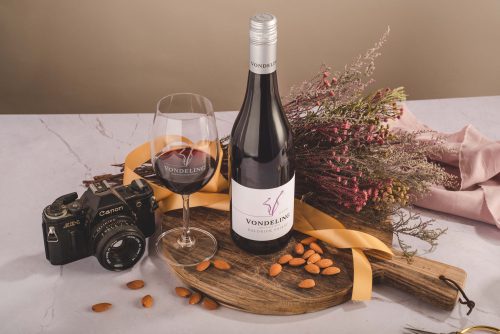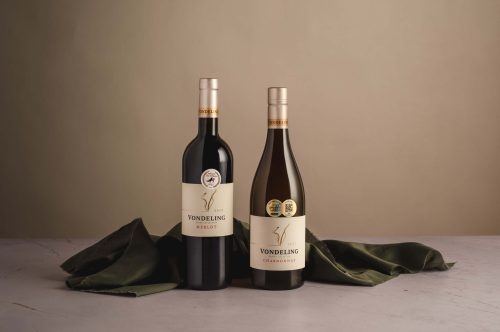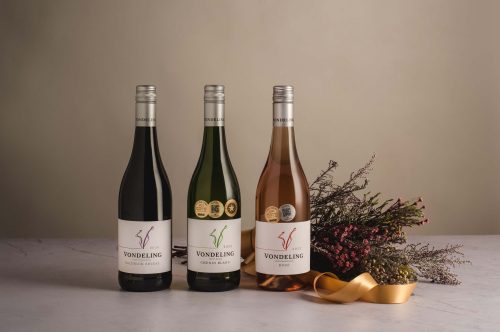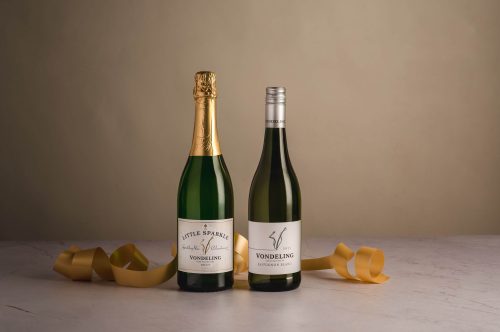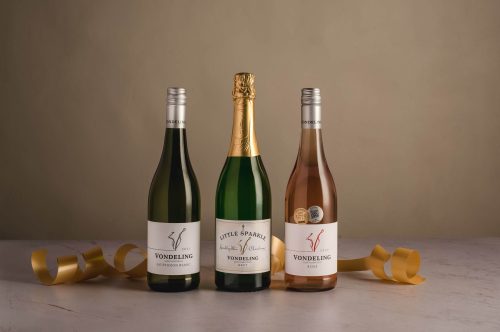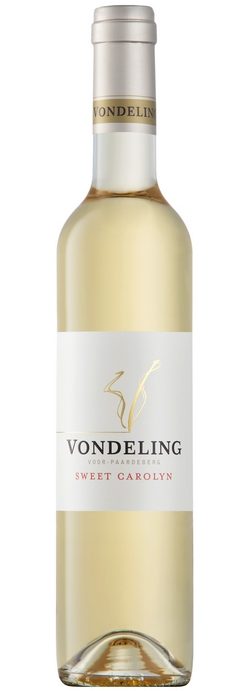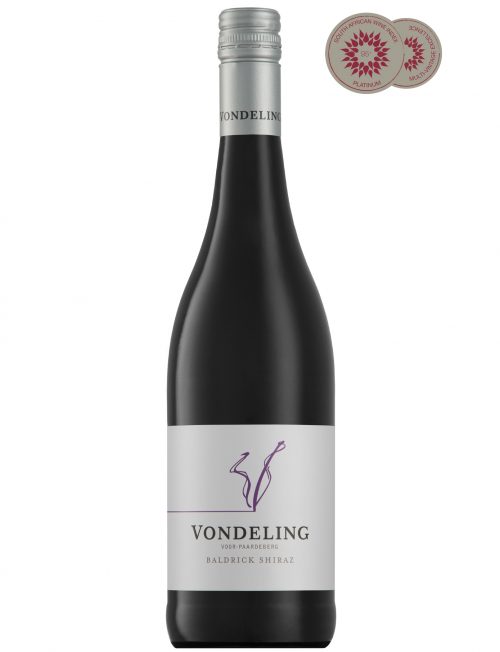(Cabernet Sauvignon 64% ,Merlot 21%, Cabernet Franc 15%)
LIMITED RELEASE
Philosophie is a brave endeavor in which we attempt to marry the mind, the heart, and the soil as we celebrate the diversity of Vondeling.
THE STORY BEHIND THE LABEL
Each year a celebrated artist is recruited to illustrate a rare Paardeberg flower in the medium of their choice. This unique artistic rendition of the chosen flower serves as the flag bearer, not only of the vintage, but also of the unique terroir in which the grapes are grown. These special labels are placed on a curated selection of Vondeling’s finest barrels to create a series of collectable, rare wines. Each bottle is individually numbered within the series. This year, we’ve chosen Monsonia speciosa, an endangered member of the geranium family, which grows in the Paardeberg. Its attractive pink and white petals have earned it, its common name the Butterfly or Umbrella Flower.
This year’s beautiful image was done in oil paint, by the renowned Wiltshire-based artist, Emma Haggas – hereby adding emotion to place.
VINEYARDS
On Vondeling, in a handful of site-specific vineyards, we employ the very finest viticultural and scientific methods to explore the limits of quality grape production. Each vineyard is carefully assessed at the end of the growing season and attentively pruned during the winter months. At bud burst, any shoots which develop poorly are immediately removed. This ensures that the remaining canes are robust with plenty of energy to ensure fertile flowers and uniform berry set. As the grapes develop, only the best bunch per cane is selected and the rest are dropped to the ground. This lowers the load on the vine, thereby removing any stress in the plant and allowing perfect flavour and tannin development. It also diminishes any need for irrigation and helps preserve the grape’s natural acidity.
VINIFICATION
Once deemed to have reached optimal ripeness the grapes are hand- picked and refrigerated for 24hrs. The bunches are gently destemmed, but the berries are kept intact for individual berry sorting during which any green material and unripe berries are removed. The berries are not pumped, but ferried, via conveyor to open-top fermenters. This reduces the amount of juice exposed to degradation by oxygen. Cold soaking is done at 6 ˚C for a period of 3 days. Cold soaking is a process which facilitates partial degradation of the grape cell wall, to gently extract the flavours and aromatics situated below the surface of the skin. Subtle tannin extraction protects these delicate flavours and promotes colour stability. As the berries slowly come to room temperature, spontaneous fermentation begins due to the presence of natural, ambient yeast. This natural fermentation by multiple yeast strains, is preferable, as it furthers the regional expression of the wine while promoting complexity and character. A cool fermentation temperature slows the rate of fermentation and affords our winemaker adequate time to assess and manipulate the character of the wine, thus unlocking its full potential. Full extraction is ensured by regular punch downs during a two-week ferment. The skins are further macerated post-fermentation for a week before they’re pressed in a traditional basket press. From the press, the wine moves to 300L French Oak barrels for malolactic fermentation. This slow bacterial degradation of the wine’s harsher acidity has the welcome side effect of meshing the oak and natural fruit flavours into a seamless package. Two-thirds of the barrels are new.
The wine remains on its yeast and malolactic lees for 14 months before the best 10 barrels are selected. These barrels are blended and returned for an additional 8 months of maturation. Of these 10 barrels only 5 are selected for the final blend. The wine is bottled after 3 months in tank and bottle matured for at least two years before release.
TASTING NOTES & CELLARING & FOOD PAIRING
The colour is a near-opaque charcoal red with a dense, scarlet hue. The nose has a superb sense of plush black current, wonderfully restrained and balanced by a hint of graphite. At the same time, the delicate floral notes of the Cabernet Franc are seamlessly infused with notes of sweet raspberry, uplifting aniseed and a hint of pencil shavings.
The palate has a dense, weighted presence with a persistent finish. The tannins of this powerful wine are quite precise and balance the abundant ripe berry flavours beautifully. Bright notes of cinnamon and vanilla flow through the berry melange and are supported by seamless oak. This wine’s complex character lends itself to richer cuts of meat and dishes redolent with layers of umami-laden flavour. The likes of pan-seared duck, slow-roasted beef and venison goulash are all excellent counterparts, as are posh burgers with all the trimmings and saucy Tournedos Rossini.
Accolades
2016 Vintage:
2022 Platter Guide - 4.5 Stars(94 Points)
2017 Vintage:
2023 Platter Guide - 5 Stars (96 Points)
2019 Vintage:
2024 Platter Guide -5 Stars(97 Points) & Category winner (Cape
Bordeux Blend)
Analysis
pH 3.73
Total Acidity 5.5 g/l
Residual Sugar 3.7 g/l
Alcohol 14.64 %
Download tasting notes 






